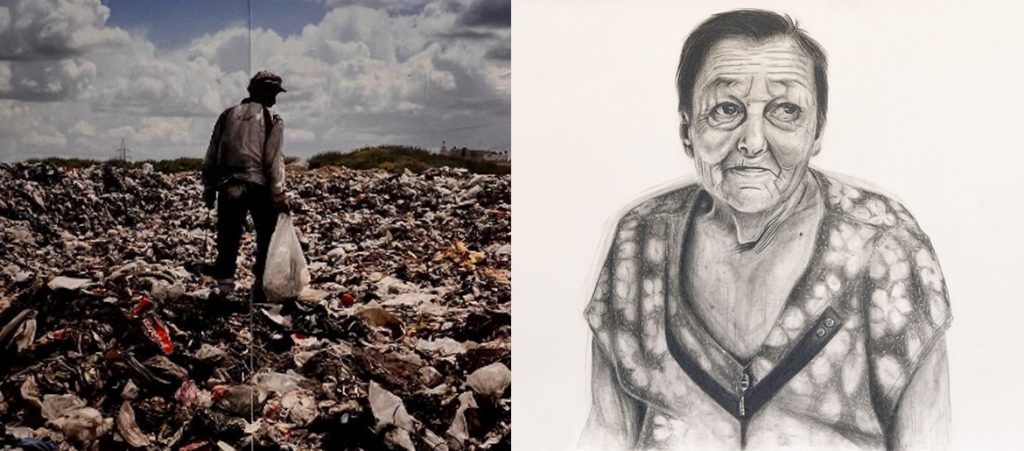
Even after the fighting has ended, the aftermath of war casts a long shadow over cities, leaving the people who live in them with the immense task of rebuilding from the beginning. How long does it truly take for a city to recover after war? What factors influence the pace and success of post-war reconstruction? ‘War in Cities’, an exhibition commissioned by the International Committee of the Red Cross (ICRC) gives us a glimpse at what it’s like to live in an urban war zone, through a collection or real objects, recordings, images and original artworks by artist Marwa Charmand.
We asked the team from the International Committee of the Red Cross (ICRC) and about the realities, challenges and essential factors that will shape the road to recovery for people living in the 100 active conflict zones worldwide.
Zee Feed: Is it truly possible for a population and a city to fully recover from the impacts of war?
ICRC: Full recovery from war is impossible. All wars leave indelible marks, they change the course of history. But something close to full recovery is possible. This can take decades for foundations like infrastructure, and generations for the people impacted by conflict.
What factors determine the speed and success of recovery?
Armed conflict has specific, large-scale, multi-faceted effects on urban communities and infrastructure. This means that the use of weapons designed for open battlefields – like large bombs, missiles, or rockets – take down everything around them, causing injuries, deaths and destruction on a massive scale. It can also take years, decades even for unexploded weapons like landmines to be cleared from streets, backyards, or dug up from the ground. Not only do these things keep killing people long after fighting has ended, it slows down the recovery of human remains, reconstruction of homes and infrastructure, and prevents the safe return of displaced people.
Beyond these physical effects of the fighting, there are also cumulative patterns of harm: people find themselve sick or injured, traumatized by the fighting, lacking clean water, gas or electricity, with no income to support their families. People flee, which leads to a society-wide ‘brain drain’ that is an issue for recovery – you lose specialist skills like engineers, urban planners, medical staff.
It all means recovery and reconstruction can take decades, especially when heavy explosive weapons are used in protracted conflict. For example, after just four years of armed conflict in Yemen, human development indicators were set back 20 years.
Is there anything that can be done during the active warfare that will help recovery after the fact?
Having humanitarian actors on the ground during conflict makes a difference. They are doing things like helping communities absorb shocks, speaking about the rules of war, and providing assistance through cash grants or bolstering water supply.
Flexible multi-year funding from States and donors for systemic support also helps prevent the “development reversals” in affected cities – it’s funding for long-term projects, rather than immediate funding [during war]. Humanitarian efforts were historically focused on short-term emergency response – while this still works in some cases, like after a natural disaster, it doesn’t apply well to long protracted crises.
Besides war itself, what are the biggest challenges to post-war recovery and humanitarian aid in general?
There are more than 100 armed conflicts in the world today, and the suffering of these conflicts combined with a worsening climate emergency and rising food prices made 2022 a year of serious humanitarian need. It’s a pattern that is continuing this year. The intersection of climate change and conflict is not going away.
Of the 25 countries deemed most vulnerable to climate change, 60% are mired in conflict. Adapting to climate change often requires major changes. But ambitious, concerted and long-term efforts tend to be limited in times of war as authorities are not only weak, but they are also preoccupied with security priorities. In the absence of support, people’s ability to cope is weakened and communities may be forced to drastically change their way of life.
Our approach to combating climate impacts is to build innovative solutions with communities affected by conflict – starting small and scaling up for sustainable humanitarian impact. In conflict, there are also protections for the natural environment under International Humanitarian Law. War is always disastrous, but the continuation of human suffering does not have to be inevitable with the right mechanisms in place.
How important is community engagement and participation in the post-war recovery of a city?
Humanitarian actors must work with a city, not just in a city. No one actor can do it all, given the scale and complexity of urban warfare, so it’s crucial to develop partnerships with local authorities, service providers, communities, and local organizations and businesses. It helps understand and prioritise needs where it might otherwise be difficult to know where to start – people already know where community hubs are and the patterns of life.
Community engagement ensures we respond to people’s real needs in a way that respects their dignity and agency. When authorities and governance have collapsed due to conflict, the communities themselves become part of delivering the humanitarian response.
The International Committee of the Red Cross (ICRC) ‘War in Cities’ exhibit will be showcased in Brisbane at the University of Queensland from 16 August to 1 September, and in Melbourne at Testing Grounds from 14 – 26 November.

Comments are closed.